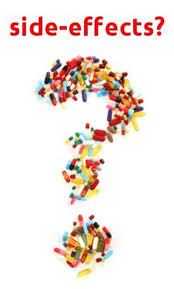Dating and Relationships When Living with Epilepsy

For adults living with epilepsy, dating and relationships can raise unique concerns and questions. How do I bring up my diagnosis? Will my partner understand how to help if I have a seizure? What if I’m judged or misunderstood? These are valid concerns — but they shouldn’t stand in the way of meaningful connection and love. With the right tools and mindset, it’s absolutely possible to build healthy, fulfilling relationships while managing epilepsy.
Being Open About Your Diagnosis
One of the most common questions is when — and how — to tell someone you’re dating that you have epilepsy. While there’s no one-size-fits-all answer, honesty is important. You don’t need to disclose everything on a first date, but when you start to feel a connection and think the relationship could grow, it’s a good idea to share your diagnosis.
Here are some tips:
- Choose a calm, private setting: This allows for an open and thoughtful conversation.
- Speak with confidence and clarity: Explain what epilepsy is, the type of seizures you experience, and how they can support you if one occurs.
- Be ready for questions: Curiosity is natural, and giving your partner space to ask questions helps create trust.
- Focus on strengths: Talk about how you manage your health and continue to live an active, full life.
Remember, how someone responds to your openness says a lot about their character and capacity for empathy. A supportive partner will want to understand and learn.
Managing Seizures in a Relationship
If you have frequent seizures, your partner may witness one at some point. Preparing them ahead of time is key. Teach them seizure first aid — what to do (and what not to do), when to call for help, and how to support you afterward.
Involving your partner in your care — such as helping you track triggers or accompanying you to medical appointments (if you’re comfortable) — can foster connection and show that you're a team.
Intimacy and Emotional Health
Like any chronic condition, epilepsy can affect self-esteem and body image, which in turn can impact intimacy. Fatigue, anxiety, medication side effects, and emotional ups and downs may all play a role.
Open communication is essential. Let your partner know how you’re feeling, both physically and emotionally. A compassionate partner will appreciate your honesty and be willing to adapt and support your needs. If intimacy becomes challenging, consider speaking with a healthcare provider or therapist who understands epilepsy and relationship dynamics.
Understanding and Setting Boundaries
Living with epilepsy may mean adjusting certain lifestyle habits, such as avoiding sleep deprivation, alcohol, or specific activities that could be risky. It's okay to set boundaries to protect your health. A caring partner will respect these decisions and support your efforts to maintain stability.
Likewise, you have the right to protect your emotional well-being. If someone is dismissive or makes you feel uncomfortable about your condition, it's perfectly valid to walk away from the relationship. You deserve someone who respects and uplifts you.
Building Confidence in Dating
Living with epilepsy doesn’t make you less worthy of love. In fact, your resilience, self-awareness, and capacity for empathy are strengths that can deepen relationships. If you’re feeling nervous about dating:
- Join a support group or online community for people with epilepsy
- Practice your “disclosure conversation” with a trusted friend or therapist
- Start with low-pressure social interactions
- Remember that rejection is a normal part of dating — and not a reflection of your worth
Dating and maintaining romantic relationships while living with epilepsy can be complex, but it’s also entirely possible — and often deeply rewarding. By communicating openly, setting healthy boundaries, and choosing partners who truly care, you can cultivate relationships that support both your heart and your health. You are more than your diagnosis, and you deserve love, connection, and understanding.
Text generated by ChatGPT, May 28, 2025, OpenAI, https://chat.openai.com/chat. ChatGPT